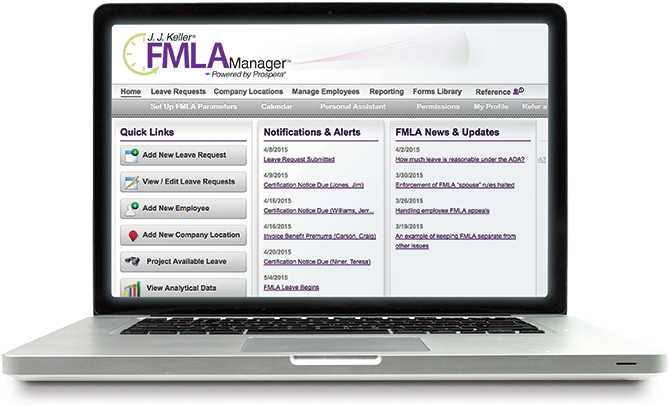FMLA Articles
Court: No harm, no foul in FMLA reinstatement case
Key to remember: In order to win an FMLA interference claim, employees generally need to have had some form of loss.
Applies to: All public employers and private employers with 50 or more employees..
Impact to customers: Employers can prevail in FMLA cases if they return employees to work after leave in such a manner that does not pose harm to the employee.
Case in point
Hal had worked in sales for the company for a few years when he needed FMLA leave, which was granted in full.
While Hal was on leave, the company was acquired by another one. As such, upon his return to work, Hal would have a territory closer to his home, but he would not have his old accounts and he would need to develop new ones. His commissions, however, would remain constant for six months.
After returning from leave, Hal received his year-end evaluation, which reflected an overall rating of inconsistent, based on his performance before his leave. Company policy indicated that an “inconsistent” rating rendered Hal ineligible for an internal transfer to a different position.
Bonnie, a sales VP heard through the grapevine that Hal did not wanted a transfer and contacted HR to discuss options. Later that day, Bonnie told Hal that a transfer was not available, and offered him a severance package so he could leave the company on good terms. Bonnie asked Hal to keep the offer in confidence and to provide an answer in the next couple of days.
Hal, however, discussed his transfer wishes and the severance package to coworkers. Bonnie found out about this and again talked to Hal, who indicated that he felt he was being pressured out of the company.
Shortly thereafter, the company decided to terminate Hal for lying to Bonnie regarding not talking about the offer and that Hal had no interest in continuing to work for the company.
As irritated employees often do, Hal filed suit, arguing that the company interfered with his FMLA rights in relation to his performance review and the denial of his transfer, which pointed to his not being reinstated to his former or an equivalent position because he was required to prospect for additional clients, which was more difficult than working with existing clients.
The employer, on the other hand, argued that Hal’s performance review reflected his performance before his FMLA leave. The employer also pointed out that when he returned to work, Hal had the same title, manager, and team, sold the same products, and was guaranteed the same pay (for six months). He was ultimately terminated for reasons unrelated to his FMLA leave.
The court agreed with the employer. Hal had suffered no harm, and to succeed in an FMLA interference claim, he must have been subject to some form of harm resulting from the alleged interference.
Key takeaway: While employees have a right to return to their same position or an equivalent one, if they suffer no harm in reinstatement, they likely won’t win an FMLA claim.
Hickey v. Protective Life Corporation, 7th Circuit Court of Appeals, No. 20-1076, February 12, 2021
This article was written by Darlene M. Clabault, SHRM-CP, PHR, CLMS, of J. J. Keller & Associates, Inc. The content of these news items, in whole or in part, MAY NOT be copied into any other uses without consulting the originator of the content.
You may also enjoy the following articles:

The J. J. Keller FMLA Manager service is your business resource for tracking employee leave and ensuring compliance with the latest Federal and State FMLA requirements.